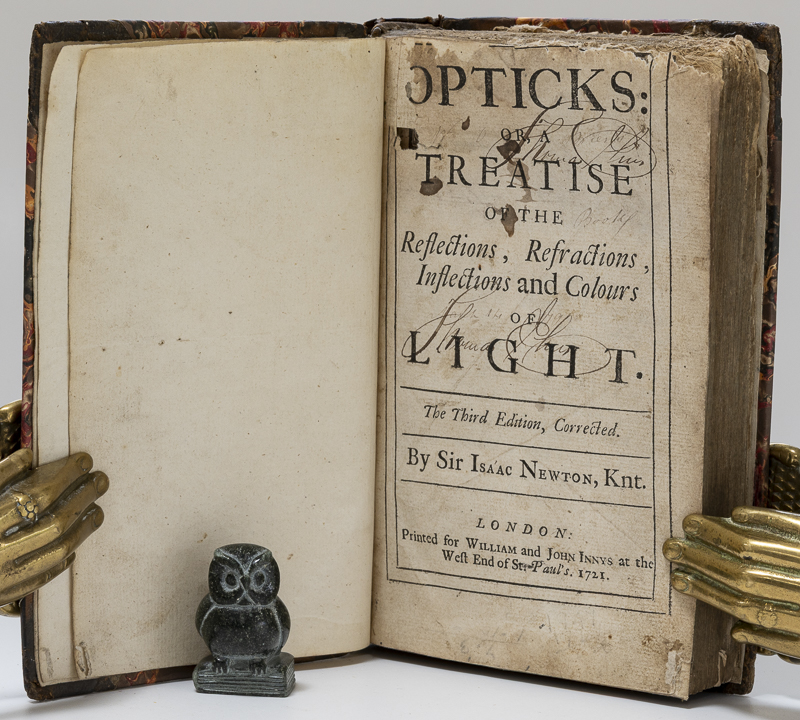Newton, Opticks:
Newton, Opticks:
|
Newton, Isaac. Opticks: Or, A Treatise of the Reflections, Refractions, Inflections and Colours of Light. The Third Edition, Corrected. London, Printed for William and John Innys, 1721. c. 18 x 12 cm. Title Page, (6) [Advertisement I & II], 382 pages, followed by 12 folding Plates. Collation: A1-A4, B1 to Bb7. One page (Q3, 229/230) missing. Contemporary half calf over marbled paper boards. Original binding with new matching marbled papers on boards. Good condition. Binding rubbed and bumped. Marbled papers replaced with new ones in 2025. Recased, using the original board and spine. Sound binding. Edges age darkened. Top edge worn with some paper losses. Age darkened throughout. Minor signs of old bookworm. Old signatures on title page and verso of title page. Some damp staining to the top edge. Some losses to the 12 Plates present. Text block remains fully readable. Plates heavily worn, with some losses.See images. Sir Isaac Newton (1643 – 1727) was an English polymath active as a mathematician, physicist, astronomer, alchemist, theologian, and author. Newton was a key figure in the Scientific Revolution and the Enlightenment that followed. His book Philosophiæ Naturalis Principia Mathematica (Mathematical Principles of Natural Philosophy), first published in 1687, achieved the first great unification in physics and established classical mechanics. Newton also made seminal contributions to optics, and shares credit with German mathematician Gottfried Wilhelm Leibniz for formulating infinitesimal calculus, though he developed calculus years before Leibniz. Newton contributed to and refined the scientific method, and his work is considered the most influential in bringing forth modern science.
Our price: EUR 2.400,-- |

|







